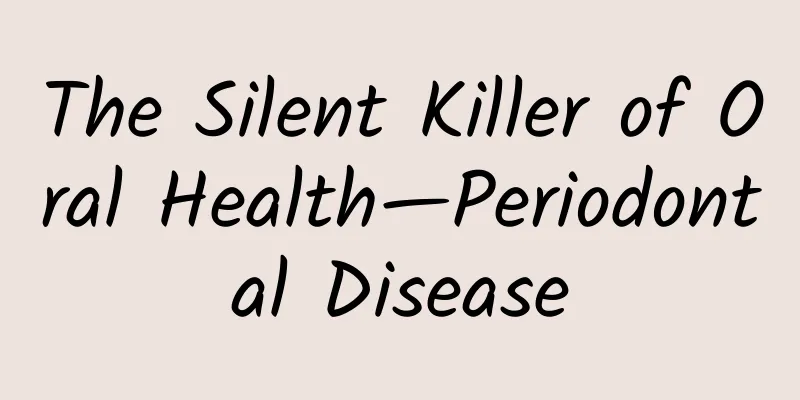There are "microplastics" in the water you drink, which are harmful to the human body! But 1 super simple step can remove them

|
Water is an important substance that constitutes the human body and plays an important physiological role. Drinking enough water is the basis for ensuring good health and can also help us maintain normal physical activities and cognitive abilities. Our daily drinking water sources are very wide, tap water, bottled water, and barreled water are all available. Some people even prefer bottled or barreled water because they are worried about the quality of tap water. Is this really a healthier choice? Copyright images in the gallery. Reprinting and using them may lead to copyright disputes. What harm do microplastics do to the human body? How many people have heard of microplastics? They are everywhere in our lives. In recent years, people have done a lot of research on microplastics. Microplastics are very small plastic particles, ranging from 1μm to 5mm in length. There are even nanoplastics, which are even smaller than microplastics, only less than 1μm in length. Compared with microplastics, nanoplastics are smaller in size and can more easily migrate through various tissues and organs in the human body. They can pass through biological barriers (such as cell membranes) and enter biological systems, including the blood, lymphatic system, and even the entire body, posing a greater threat to human health. Copyright images in the gallery. Reprinting and using them may lead to copyright disputes. In our daily lives, we live with microplastics all the time. Microplastics are found in a wide range of things. Almost everything made of plastic will contain microplastics. In addition, microplastics may also be found in the bodies of marine life such as fish and shellfish, which can enter our bodies through ingestion. Diet is the main way for humans to ingest microplastics. It is estimated that each person consumes about 5 grams of microplastics per week, which is equivalent to the weight of a bank card. Maybe many people think that microplastics are foreign matter and even if they are ingested, they should be excreted through the feces! Microplastics eaten are indeed excreted in part with feces, but some will still exist in other organs and tissues of our body. Studies have found that there are an average of 20 microplastic particles in every 10 grams of human feces. Scientists have also found the presence of microplastics in human colon specimens and even placental tissue. Scientists from the Free University of Amsterdam in the Netherlands have also found the presence of microplastics in human blood for the first time. This shows that microplastics may flow through the body with blood and affect various organs. Don't underestimate these microplastics that are ingested into the body. They can affect the absorption of micronutrients; increase intestinal discomfort symptoms such as diarrhea, rectal bleeding and abdominal cramps; and plastic particles can puncture and rub the walls of organs, inducing inflammation. At present, there are still many unknowns about the impact of microplastics on human health, which needs more exploration. There are microplastics in the water we drink In January 2024, researchers from Columbia University in the United States published a latest study in the international academic journal Proceedings of the National Academy of Sciences (PNAS). For the first time, researchers used new optical imaging technology to observe the presence of "nanoplastic/microplastic" in bottled water/barreled water, and found that each 1-liter bottle of bottled water contained about 240,000 plastic particles, including 90% nanoplastics and 10% microplastic particles. In addition, bottled water contains more microplastics when we repeatedly open and close it and expose it to high temperatures. Copyright images in the gallery. Reprinting and using them may lead to copyright disputes. However, it is not only bottled water that has microplastic problems. Tap water is also contaminated by microplastics. A study analyzed 159 tap water samples from 14 countries around the world, of which 129 contained nanoplastics/microplastics, with a detection rate of up to 81.1%. That is to say, whether it is bottled water or tap water, we will ingest some microplastics when we drink water. How to solve the problem of microplastics in water? Although drinking water can cause us to ingest microplastics, we cannot live without water. In fact, there is no need to worry too much. For tap water, we only need to boil the water before drinking it to minimize the entry of microplastics into the human body and reduce its harm to the body. In February 2024, a joint study by Guangzhou Medical University and Jinan University found that boiling hard water and then simply filtering it can remove more than 80% of nanoplastics/microplastics in the water. The study also found that as the water temperature gradually increased during the boiling process, the removal rate of microplastics in the water gradually increased; the higher the hardness of the water, the better the removal effect of microplastics in the water. This is because the boiling process allows microplastics to co-precipitate with certain compounds in the water, and they are easily wrapped by scale and precipitated at the bottom of the container, thus achieving a better removal effect. Copyright images in the gallery. Reprinting and using them may lead to copyright disputes. Based on the differences in global water quality and water use habits, researchers estimated the intake of nanoplastics/microplastics by adults and children in 67 regions on six continents through drinking boiled water and tap water. The results showed that compared with drinking tap water every day, the intake of nanoplastics/microplastics by drinking boiled water was 2 to 5 times lower than that of the former. "Drinking more hot water" is a traditional way of keeping healthy for Chinese residents. It is not only comfortable to drink, but also can "purify" water, helping us reduce the intake of microplastics, which is more beneficial to health. At the same time, it is also recommended that you let the water settle for a while after boiling, do not drink the remaining water, and use filtering devices, such as installing filters on tap water and using cups with filters. Tips to reduce microplastic intake Since microplastics are harmful to health, in addition to boiling water before drinking it, it is also recommended to do the following things. 1. Eat less takeout food in plastic packaging and don’t eat directly out of plastic bags Most takeout foods are packed in plastic boxes or plastic bags, and these plastic products may cause us to ingest more microplastics. Copyright images in the gallery. Reprinting and using them may lead to copyright disputes. Don’t put spicy hot pot, rice noodles and other foods in plastic bags directly on the bowl to eat, because the high temperature will make more microplastics dissolve in the food. After receiving the takeaway, you should pour the food into your own tableware as soon as possible. In addition, eat less food packaged in plastic. 2. Use less plastic cutting boards Researchers cut carrots on polypropylene and polyethylene cutting boards respectively, and assessed the average total exposure to microplastics per person when using these two types of plastic cutting boards. Copyright images in the gallery. Reprinting and using them may lead to copyright disputes. The results showed that both would contaminate carrots with microplastics, and more microplastics would fall off when cutting food with a knife. According to the researchers' estimates, if a plastic cutting board is used, a person may be exposed to 14.5 million to 71.9 million polyethylene microplastics and about 79.4 million polypropylene microplastics each year. 3. Don’t eat seafood offal Microplastics can enter the bodies of some marine organisms and contaminate fish and shellfish. Researchers from Hull York Medical School at the University of Hull in the UK systematically analyzed more than 50 studies between 2014 and 2020 to investigate the level of microplastic pollution in marine life around the world. They found that microplastic pollution was most serious in mollusks along the coast of Asia, and was present in various parts of marine animals, including the intestines and liver, with mussels, oysters and scallops having the highest levels of microplastics. Therefore, when eating seafood, first of all, do not eat it raw, make sure it is cooked thoroughly; secondly, remove the stomach, intestines, internal organs and gills. 4. Drink less milk tea and use less plastic straws Drinks or foods at high temperatures will release more microplastics, including but not limited to hot coffee, hot milk tea and other drinks. Many people are also accustomed to using plastic straws to drink beverages, which will also increase the intake of microplastics. 5. Try not to use the non-stick pan after it is scratched A study published in Science of the Total Environment in 2022 mentioned that scratches of a few millimeters on non-stick pans can release a large amount of microplastics. Damaged coatings may lead to the release of 2,300,000 microplastics and nanoplastics, and surface cracks may leave about 9,100 plastic particles. Copyright images in the gallery. Reprinting and using them may lead to copyright disputes. The non-stick coating of most non-stick pans is usually polytetrafluoroethylene, also known as Teflon, which is a synthetic plastic. When there is strong abrasion between the cookware surface and hard objects, tiny polytetrafluoroethylene particles may be formed, which can then contaminate food and be ingested by humans. Therefore, it is best not to use a non-stick pan after it is scratched. Do not use a non-stick pan to cook hard foods, such as ribs. Do not use sharp spatulas, and replace the pan regularly. References [1] Cox KD, Covernton GA, Davies HL, Dower JF, Juanes F, Dudas SE. Human Consumption of Microplastics. Environ Sci Technol. 2019 Jun 18;53(12):7068-7074. doi: 10.1021/acs.est.9b01517. Epub 2019 Jun 5. Erratum in: Environ Sci Technol. 2020 Sep 1;54(17):10974. PMID: 31184127. [2] Leslie HA, van Velzen MJM, Brandsma SH, Vethaak AD, Garcia-Vallejo JJ, Lamoree MH. Discovery and quantification of plastic particle pollution in human blood. Environ Int. 2022 May;163:107199. doi: 10.1016/j.envint.2022.107199. Epub 2022 Mar 24. PMID: 35367073. [3]Qian, Naixin et al. “Rapid single-particle chemical imaging of nanoplastics by SRS microscopy.” Proceedings of the National Academy of Sciences of the United States of America vol. 121,3 (2024): e2300582121. doi:10.1073/pnas.2300582121 [4] Naixin Qian, Xin Gao, Xiaoqi Lang, Huiping Deng, Teodora Maria Bratu, Qixuan Chen, Phoebe Stapleton, Beizhan Yan, and Wei Min. "Rapid single-particle chemical imaging of nanoplastics by SRS microscopy." PNAS. 2024. [5]Yadav, Himani et al. “Cutting Boards: An Overlooked Source of Microplastics in Human Food?.” Environmental science & technology vol. 57,22 (2023): 8225-8235. doi:10.1021/acs.est.3c00924 [6]Danopoulos, Evangelos et al. “Microplastic Contamination of Seafood Intended for Human Consumption: A Systematic Review and Meta-Analysis.” Environmental health perspectives vol. 128,12 (2020): 126002. doi:10.1289/EHP7171 [7]Luo, Yunlong et al. "Raman imaging for the identification of Teflon microplastics and nanoplastics released from non-stick cookware." The Science of the total environment vol. 851,Pt 2 (2022): 158293. doi:10.1016/j.scitotenv.2022.158293 Author: Xue Qingxin, registered nutritionist Review丨Liu Lu Professor and doctoral supervisor at the School of Chemistry and Molecular Engineering, East China Normal University |
<<: 5 Ways to Live Happier as You Live (Must-Read for Middle-Aged People)
Recommend
What is the reason for having leucorrhea all the time?
The secretion of leucorrhea is a normal physiolog...
A 9-year-old boy in Hunan has "grapes" growing in his head! This disease is very exciting
Severe headache, high fever, aphasia, hemiplegia,...
What causes foul vaginal discharge?
The vagina is a female private part. It is a very...
Treatment methods for ovarian teratoma, these measures are very effective
The so-called ovarian teratoma actually refers to...
Will my menstruation be abnormal after an abortion?
With the development of society, more and more fe...
40 weeks of pregnancy signs of labor
It is said that pregnancy lasts ten months and de...
Pregnant woman wakes up with finger joint pain
During pregnancy, women should pay attention to c...
In what situations can vaginal suppositories be used on your own?
Vaginitis is an unspeakable pain for many women. ...
What is the function of RNA injection?
Have you heard of RNA injection? A friend asked m...
How to prevent premenstrual acne
During menstruation, due to changes in the female...
Is it good for women to eat almonds?
Eating almonds is a good choice for women, becaus...
How many times should blood be drawn for sugar screening?
Many women are in the stage of pregnancy, and the...
How to tell if you are pregnant by touching your belly
Every mother who is preparing for pregnancy hopes...
Can I take a bath during confinement?
Basically everyone takes a bath every day. Even i...
What should women eat if they have poor resistance? How to supplement women's poor resistance
Women's physical fitness is generally not goo...









